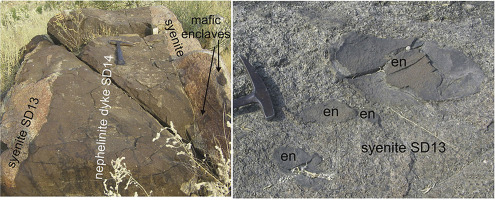An intrusion is a body of igneous (created under intense heat) rock that has crystallized from molten magma. Gravity influences the placement of igneous rocks because it acts on the density differences between the magma and the surrounding wall rocks (country or local rocks). In general, silica-rich magmas are less dense than wall rocks, while silica-poor magmas are similar in density to wall rocks. Because of this , low density intrusions take different shapes to higher density intrusions .
Low-density magmas (such as granitic magmas) are more buoyant in their invasions and cause subsidence of the surrounding wallrocks. High-density magmas (such as basaltic magmas) are closer in hydrostatic equilibrium with the surrounding wallrocks.
Dyke swarms reflect stress fields or basement fabric.
Some forms of basalt, like this one, weather quite quickly and are easily removed by wave erosion to form trenches.
Examples of the ideal dike shape for trachybasalt magmas. (A) and (C) are a photograph and accompanying sketch showing a teardrop-shaped trachybasalt dike that provides evidence of a magma flow process that separated the magma into distinctive dike head, body, and tail sections. The bulging head shape formed as a result of the concentration of stress caused by excess magma pressure, with the inferred flow direction from right to left. Note the pale orange-colored (the grey in greyscale) pyroclastic material that fills the tip cavity space adjacent to the dike head. (B) and (D) are a photograph and accompanying sketch showing a bifurcating trachybasalt dike that flowed from right to left.

















No comments:
Post a Comment